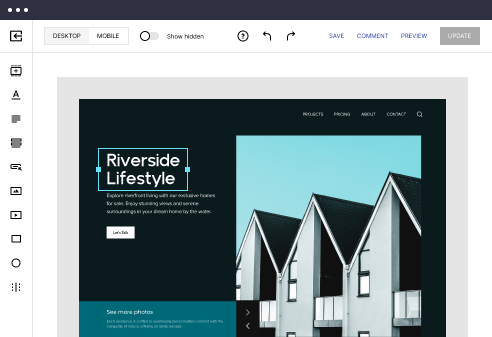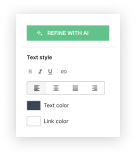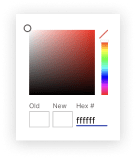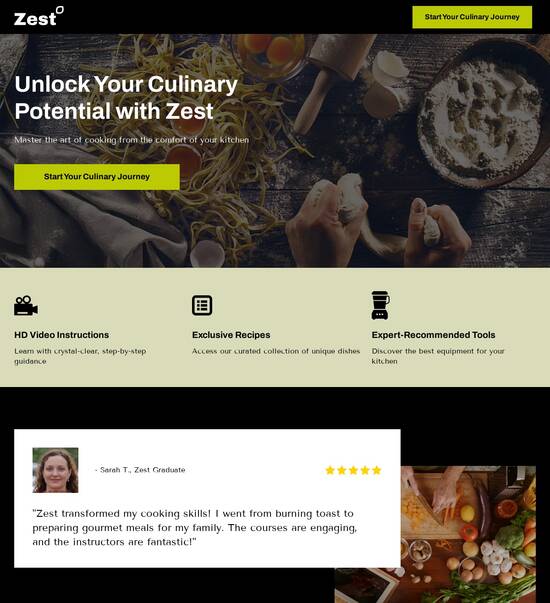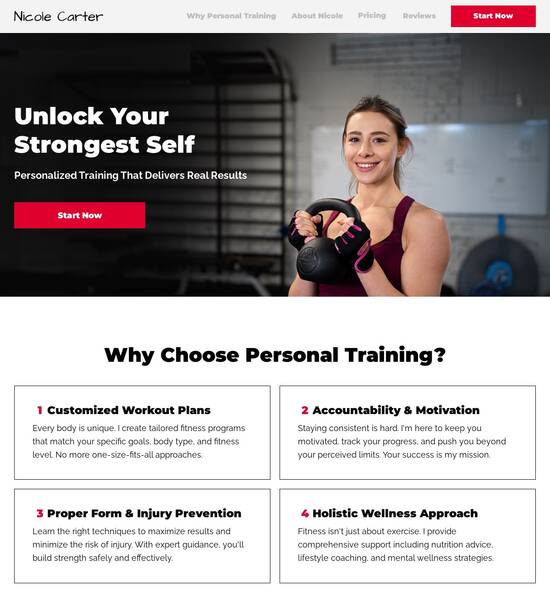
HTML page template with interactive language selector bar
Explore Similar TemplatesAbout template
Use HTML page templates with interactive language selector bar and make your communications easy and transparent. Try our solution today.
Recommended templates
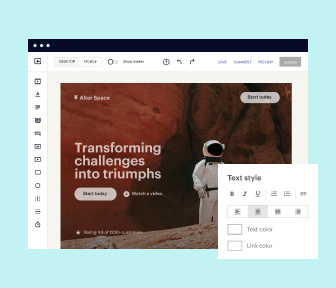
Easy to build without coding
With the intuitive drag-and-drop builder, anyone on your team can create high-converting pages without any knowledge of code or design. Make enhancements to your landing page with custom widgets using Javascript, HTML/CSS, or third-party scripts.
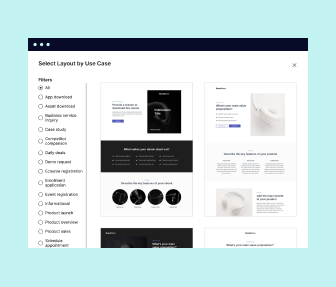
Multiple layouts for any industry and goal
Select from 500+ landing page layouts built to boost conversions across industry-specific scenarios. Customize them by adjusting fonts, adding images, and generating on-brand content with the AI assistant. Quickly scale with Instablocks® and Global Blocks that you can save, reuse, and update globally.
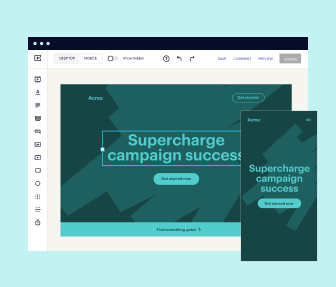
Loads fast and looks polished on any device
Every template is responsive, which means they present professionally on any device and load blazingly fast with our Thor Render Engine. You can also power them up with Google AMP technology to deliver an unparalleled mobile experience and drive higher conversions.
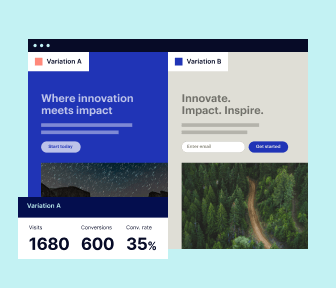
Robust analytics & experimentation
Get real-time updates and reporting across all your devices, showing the number of visitors, conversions, cost-per-visitor, and cost-per-lead. Launch AI-powered experiments, run A/B tests, and use heatmaps to analyze user behavior, then optimize your landing page to maximize conversions.

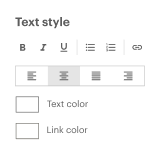
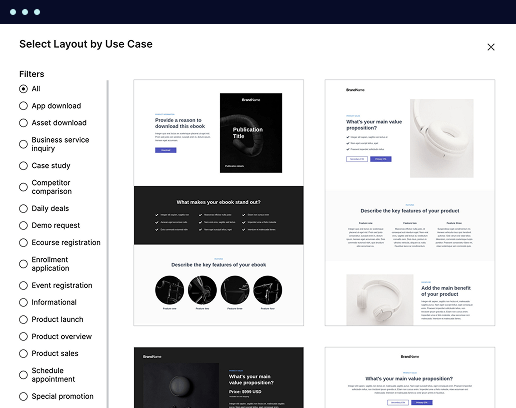
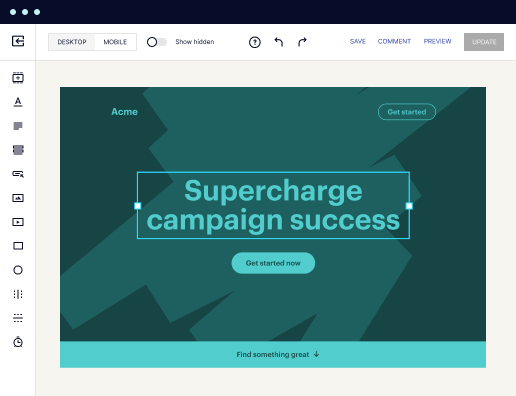

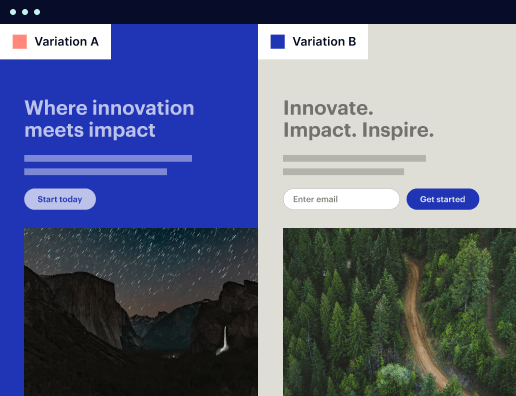

Easy to build without coding
With the intuitive drag-and-drop builder, anyone on your team can create high-converting pages without any knowledge of code or design. Make enhancements to your landing page with custom widgets using Javascript, HTML/CSS, or third-party scripts.
Multiple layouts for any industry and goal
Select from 500+ landing page layouts built to boost conversions across industry-specific scenarios. Customize them by adjusting fonts, adding images, and generating on-brand content with the AI assistant. Quickly scale with Instablocks® and Global Blocks that you can save, reuse, and update globally.
Loads fast and looks polished on any device
Every template is responsive, which means they present professionally on any device and load blazingly fast with our Thor Render Engine.
Robust analytics & experimentation
Get real-time updates and reporting across all your devices, showing the number of visitors, conversions, cost-per-visitor, and cost-per-lead. Launch AI-powered experiments, run A/B tests, and use heatmaps to analyze user behavior, then optimize your landing page to maximize conversions.
All the features you need to build html language selector
Explore more featuresLearn how to build language selector html
Frequently asked questions about html css language selector
Leading the way in building high-performing landing pages





Language selector html css: Your ultimate how-to guide
Landing pages are a crucial element of successful digital marketing strategies. By leveraging Instapage, the industry-leading landing page and conversion rate optimization (CRO) platform, marketers can effectively elevate their campaigns and maximize ROI. This step-by-step guide will walk you through optimizing your landing pages, ensuring you capture leads and drive results effectively.
Understanding the power of Instapage
Instapage provides an all-in-one solution that caters to varying budgets and team sizes. With over 100 ready-to-use templates, marketers can quickly launch high-converting landing pages. The platform’s flexible design capabilities empower users to build and optimize pages without requiring coding skills.
- Ready-to-use templates: Quickly implement high-converting designs tailored to your specific industry.
- No coding required: Build landing pages effortlessly through intuitive, drag-and-drop features.
- Comprehensive analytics: Measure the success of your pages with detailed performance metrics.
Step 1: Crafting your landing page
The first crucial step is to craft your landing page with a focus on conversion. Utilize Instapage's library of conversion-focused layouts and Instablocks. Doing so will not only save time but also ensure effectiveness in capturing leads.
- Choose a template: Select from over 100 high-converting templates tailored to your audience's needs.
- Customize elements: Leverage the drag-and-drop interface to add elements such as images, forms, and call-to-action buttons.
- Preview and test: Utilize Instapage's preview feature to simulate user interaction before publishing.
Step 2: Optimizing for conversions
Once your page is set up, focus on optimization. Instapage offers built-in experimentation features that help you understand user behavior and improve your page’s performance.
- Use heatmaps: Analyze on-page behavior to see where users are engaging most.
- Conduct A/B testing: Regularly test variations of your landing page to find the highest converting elements.
- Analyze results: Leverage detailed analytics to assess performance and implement changes.
Step 3: Personalizing experiences
The final step involves personalizing the user experience to enhance engagement. Implement dynamic text replacements and tailored content based on audience segments.
- Dynamic text replacement: Automatically adjust text based on the visitor's source or demographics.
- AdMaps: Align specific ads with unique landing pages to improve relevance.
- Audience-level metrics: Track and analyze user engagement to further refine your approach.
By following these steps, marketers can leverage Instapage to elevate their landing page strategies, resulting in heightened engagement and increased conversions. The platform's comprehensive tools and features empower users to maximize their marketing efforts efficiently.
Ready to enhance your digital marketing campaigns? Explore Instapage today and take the first step toward transforming your landing pages into conversion machines!
People also ask about language picker html css
HTML page template with interactive language selector bar
Understanding the need for interactive language selection in web development
With more than four billion users accessing the internet worldwide, the need for interactive language selection in web development has become increasingly apparent. Websites that support multiple languages can more effectively engage a diverse user base, enhancing the overall experience for visitors from varying linguistic backgrounds. By integrating a language selector, developers can cater to the preferences of users, allowing them to navigate and consume content in their native language.
Multilingual support doesn’t just allow users to understand content; it significantly affects their engagement and conversion rates. Personalization through language selection helps to create a connection between the user and the page, making them feel more welcomed and valued. Consequently, the incorporation of language selection tools can lead to higher levels of accessibility, ultimately influencing the success of web initiatives.
Defining the HTML page template
HTML page templates serve as the foundation for building web pages, providing a pre-designed structure and necessary elements that can be customized according to specific needs. A well-defined template aids developers in maintaining uniformity across different pages while ensuring that essential functionalities are present. Customization is crucial in web development, allowing businesses to adapt templates to align with branding identities and user expectations.
Utilizing templates can lead to rapid development cycles, giving both beginners and professionals a jump-start in their web projects. By leveraging pre-made designs, developers can focus on enhancing functionalities instead of starting from scratch, which is particularly useful in various industries where time and efficiency are vital. Templates not only speed up the development process but also allow for easier updates and maintenance over time.
The mechanics of an interactive language selector bar
Creating a user-friendly language selector bar requires careful consideration of both design and functionality to ensure it appeals to users. A visually appealing and accessible selector can significantly improve user engagement. Choices regarding colors, typography, and iconography play an essential role in creating an inviting interface. Additionally, proper placement on the webpage, often near the top or in the navigation menu, enhances visibility and encourages usage.
From a technical aspect, developers must adhere to essential HTML coding practices when implementing a language selector. Utilizing JavaScript can help provide dynamic functionality while CSS can be employed to enhance the visual aspects, creating a cohesive user experience. APIs play an important role in loading different language files dynamically, thus improving the loading times and performance of the website.
Key features of an interactive language selector
A well-designed language selector should emphasize usability. Options like dropdown menus and flag icons are common, but each has its own merits regarding effectiveness. A dropdown may occupy less space and maintain a clean interface, while flag icons can provide immediate recognition of different languages. Additionally, ensuring the selector is responsive on various mobile devices is crucial, as an increasing number of users access content via smartphones.
User-friendly interface that is visually appealing and easily accessible.
Seamless transitions between language selections to avoid any disruptions.
Optimization strategies for quick loading times and user efficiency.
The benefits of integrating a language selector bar
One major benefit of a language selector bar is increased accessibility for non-native speakers. By accommodating various languages, businesses can attract a broader audience base looking for content in their preferred language. Moreover, globally recognized brands are often more appealing to diverse consumer bases, making a language selector an essential addition for any website aiming for an international presence.
Additionally, having a language selector can significantly improve SEO. Localized content that matches search engines' language-specific queries can help enhance brand visibility across various linguistic demographics. This capability is particularly beneficial for businesses looking to tap into new markets, ultimately leading to improved user engagement and conversion rates as users are more likely to interact with content available in their language.
The development process: From concept to implementation
To successfully implement an HTML page template with an interactive language selector, some skill requirements exist. Beginners will benefit from grasping basic HTML and CSS principles, while professionals may require advanced programming knowledge to create more sophisticated functionalities. It’s essential to create a planning phase where the design preferences and language options are laid out.
The setup guide begins with drafting a simple HTML page. Users can then implement the language selector bar using basic coding techniques. Developers can choose to incorporate features such as auto-detection of browser language or persistent selections through cookies. Testing for responsiveness and functionalities should be a continuous process, ensuring a seamless user experience across different devices and screen sizes.
Tutorials and resources for further learning
There are numerous online platforms where aspiring developers can enhance their skills in creating effective language selector bars. Free resources and tutorials are widely available, catering to users with different levels of expertise. By engaging with these learning platforms, individuals can get hands-on experience in crafting templates and implementing new features.
Moreover, community forums and discussion boards offer a platform for developers to exchange experiences regarding language selection practices. Sharing insights and learning from others can be incredibly beneficial for those navigating challenges in their implementations. These interactions also lead to a more robust understanding of what works well in diverse environments.
Real-world applications and case studies
Successful implementations of language selector bars can be observed in numerous case studies spanning various industries. Brands that have enabled intuitive language selection often report better audience feedback and increased user satisfaction. For example, large e-commerce platforms have integrated language selectors as a standard feature, enhancing global reach and improving customer interaction across different markets.
Analysis of websites like Amazon or eBay can provide insights into effective language selector designs.
Examples from educational platforms show the positive impact of language accessibility on user engagement.
Future trends in language selection and web design
As user preferences continue to evolve, web designers must remain attentive to emerging trends in language selection. Anticipating the needs of evolving internet users, especially with the rise of artificial intelligence, could pave the way for automated language selections that anticipate user preferences based on previous interactions. This could substantially streamline the browsing experience.
Furthermore, the trend of expanding localization efforts beyond just language should be observed. Understanding cultural nuances in design can significantly impact how content is received among different demographic groups. By taking these cultural aspects into account, websites can create a more personalized and relatable experience for their users.
Engaging with the community and feedback loop
Gathering user feedback is vital in continuously improving the language selection feature. Implementing surveys and enabling direct engagement with users can offer valuable insights into their experiences and preferences. Analyzing this data can help developers understand which languages are in demand and how the selector can be refined.
Moreover, establishing a feedback loop allows for the iterative improvement of language options and interface mechanics. By channelling user input into regular updates, websites can enhance their multilingual offerings, ensuring that language selections remain relevant and impactful as user demographics and preferences shift.
Ready to skyrocket conversions?
Supercharge your ad campaigns with high-performing landing pages
Get started